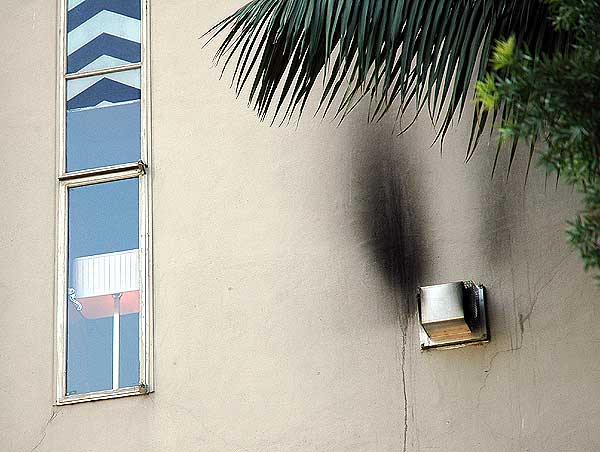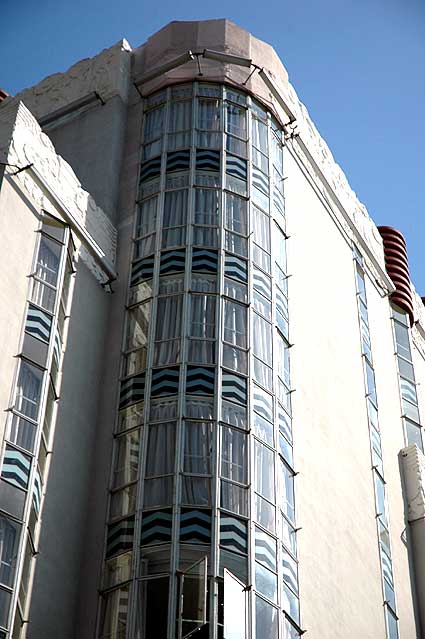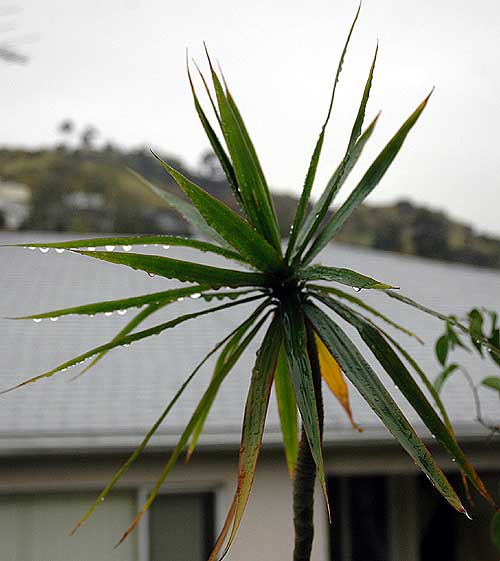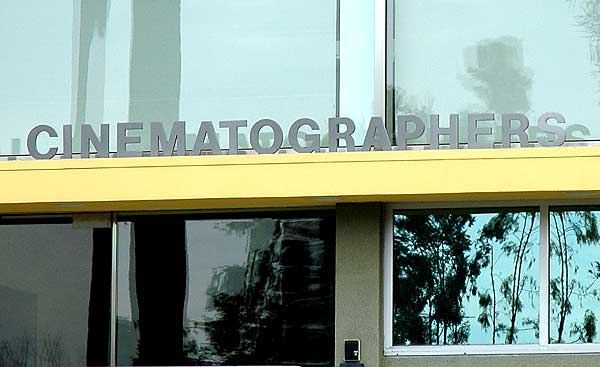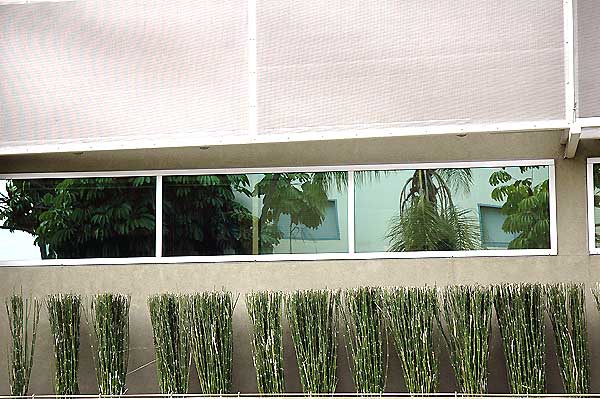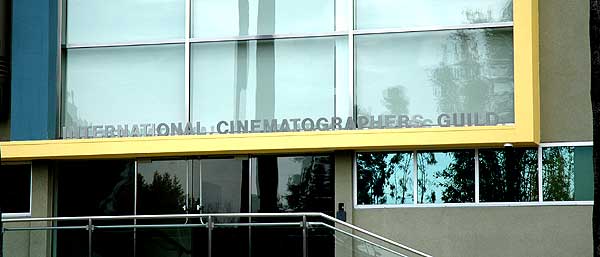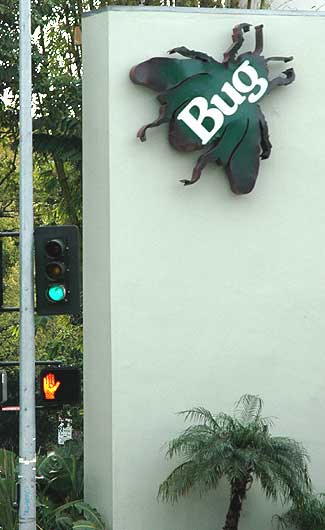Topic: Historic Hollywood
Adventures in Hollywoodland
Thursday is photography day, and it seemed like a good day to get some stock shots of the Hollywood Sign, what with the Oscars coming up this Sunday. From the front door it's just a few feet up to Hollywood Boulevard, so off on the jaunt. Drive east on Hollywood - pleasant and sunny day - and everything is fine for the mile and half to the center of Hollywood. But then everything is blocked off between Orange and Highland as they're rolling out red carpets and assembling bleachers in front of the Kodak Theater and the Boulevard is closed - so down to Sunset, east over to Wilcox, north through downtown Hollywood to Franklin, east to Beachwood Canyon, and up Beachwood Drive to where it ends at the riding stables, as close as you can get to the base of the sign. Took some pictures to appear in the weekly Just Above Sunset, but ended up driving through the hills to the other side of the sign for this shot, which sort of captures Hollywood on Oscar weekend.
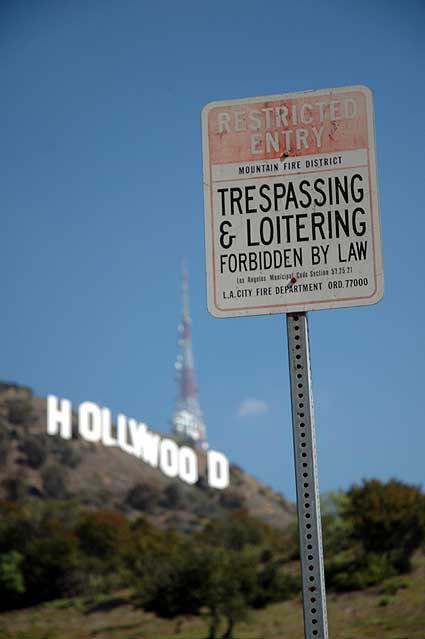
But up Beachwood Drive, before you get to the base of the sign, you pass through the gates of "Hollywoodland." Back in October 2002 NPR did a story on Hollywoodland and its connection to the famous sign (here, full text with audio link) -
So that's the story, and here's the original real estate office, still open.In 1923, Los Angeles was in the midst of expansion, and the Hills beckoned those set on sniffing out opportunities to make a mint in the real estate game. Harry Chandler, publisher of the Los Angeles Times, had involved himself in other real estate schemes previously. "Chandler and his investors owned most of the San Fernando Valley," says David Wallace, author of the books Lost Hollywood and Hollywoodland. "They just grabbed desert land because they knew the minute that water came through with the weather in the Valley it would become a garden!"
Sensing a similar opportunity in the Hills, Chandler teamed up with movie director Mack Sennett, who oversaw the investment company that did the development.
To tune everyone else in to the same signal they were picking up, Chandler had a baker's dozen worth of letters, each standing 50 feet tall, erected in the Hills. The HOLLYWOODLAND sign spelled out an invitation to up-and-comers and wishful thinkers alike that was hard to ignore. To enhance the effect, the sign was lit by 4,000 light bulbs; a nearby cabin housed a maintenance man whose sole job was changing them.
... The sign was left derelict until 1949, when the 'H' toppled in the wind. According to Wallace, the damage made people take notice. "It was at that time that the Hollywood Chamber of Commerce stepped in," he says. "[They] offered to remove the last four letters of the sign and repair the rest."
But sustained maintenance proved a somewhat trying task. As Hollywood itself started going to seed in the 1960s, the sign once again fell into disrepair. The Hollywood Kiwanis Club raised enough money to fix the damage, but soon after using the last of the funds to restore the 'D,' one of the 'O's crashed down the hill.
Fortunately, help was on the way. Hugh Hefner organized and hosted a party at the Playboy Mansion at which letters for a new sign would be sold at nearly $28,000 a pop. The adopt-a-letter campaign worked, and aided by Gene Autry (who bought an 'L') and rocker Alice Cooper ('O'), among others, Hefner ('Y') raised enough to prop those letters back up where they belonged.
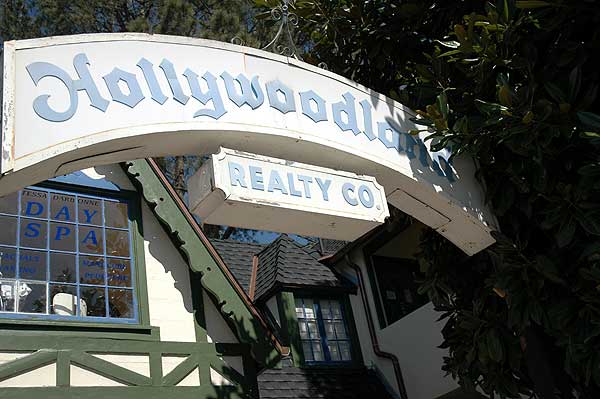
Here's the local coffee shop -

The Beachwood Canyon Neighborhood has more detail at The Story Of Hollywoodland
Gregory Williams -
Selected items from the Steve Grant and Jay Teitzell timeline -From the moment of its inception, Hollywoodland defined the lifestyle known as "living in the Hollywood Hills." With a steady stream of publicity, it acquired and retained the adjective "famed." A lot of this is due to the huge metal sign crowning the tract, the neighborhood landmark. Originally it read "Hollywoodland," but missing its last four letters, what started as a real estate promotional stunt has become the international symbol for the Hollywood film industry. On any day, tourists stand smack in the middle of Beachwood Drive, having their pictures taken with it.
It's hard to figure a giant flashing electric sign as a classy touch, but in the twenties, the developers attracted the sophisticated and artistic crowd they intended. "Hollywoodland, one of the show places of the world" is how they saw their 500 acre subdivision. To their credit, they sensitively laid out Hollywoodland. A charming small town feeling has presided for close to seventy years.
... Another draw to Hollywoodland, expressed in the developer's phrase "freedom of the hills" applies to residents of Hollywoodland lucky enough to live and work within the canyon. An artist, writer, or musician can hole up with creative work yet remain close to the rest of the world. When our father, Dino, moved us here in the fifties, our neighborhood included painter Edward Biberman who lived across the street, painting scenes of Southern California and writer Aldous Huxley who lived and worked down the hill from us. (Mr. Huxley's long, thoughtful walks at that time often included my four year old sister.)
Learn more about this unhappy Peg Entwhistle here. And of the ninety digital shots from this day, forty-two were usable, and the best of those will be in the Sunday weekly.1923 - February - Developers Woodruff and Shoults conceive of "Hollywoodland" as a neighborhood of "superb environment without excessive cost on the Hollywood side of the hills."
1923 - The construction of Lake Hollywood Reservoir commences in order to provide the burgeoning city with water and pressure. The Lake is first filled in 1925.
1924 - The "Hollywoodland" sign is constructed at a cost of $21,000 atop Mt. Lee. Thirteen 50-foot letters and four thousand 20 watt light bulbs pronouncing, in classic advertising phonics, "Holly"... "wood"... "land"... Hollywoodland."
1929 - The stock market crashes and the Depression dashes developers' plans for extending Hollywoodland further east. The limits of our neighborhood are essentially set.
1930 - Peg Entwhistle, despondent over her lackluster acting career, jumps to her death from one of The Hollywoodland Sign's 50-foot letters.
1938-39 - Bugsy Siegel opens a Speakeasy at the Castillo del Lago mansion on Hollywoodland's Durand Drive.
1944 - Hollywoodland developers deed the land north of Mulholland Highway (including The Hollywoodland Sign) to the City of Los Angeles. Later, it becomes part of Griffith Park.
1949 - The Hollywoodland Sign, originally built to last only 18 months, is in total disrepair (and all the light bulbs have long-since been stolen). The City begins removing it but is halted by a public outcry - the citizens have come to love the symbol. Instead, the sign is refurbished and shortened to "Hollywood."
1961 - May - A hillside brushfire damages 30 Hollywoodland homes and destroys 24 more including that of Aldous and Laura Huxley of Deronda Drive.
Posted by Alan
at 8:14 PM PST
|
Post Comment |
Permalink
home
Updated: Friday, 3 March 2006 8:49 AM PST
home
Updated: Friday, 3 March 2006 8:49 AM PST



